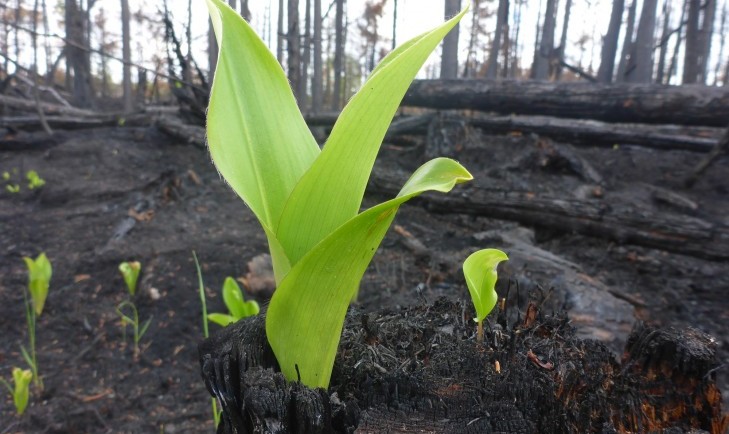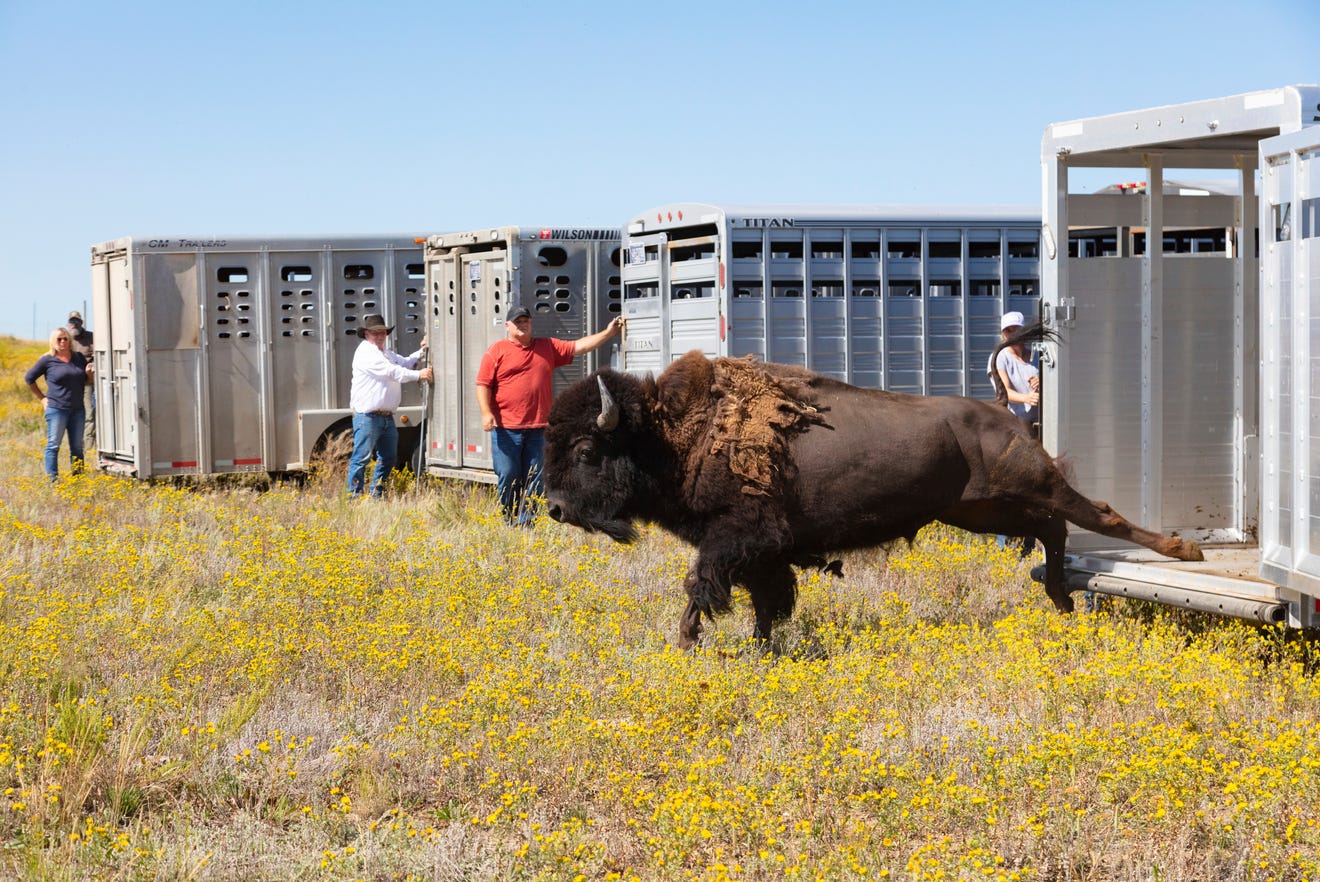
The Western Governors' Association keeps you updated on the latest news in the West. Here are the top stories for the week starting Oct. 18, 2021. (Photos courtesy of Carolyn Kosheluk, Southwest Research Institute, and Jacob W. Frank)
As the 2021 fire season winds down, many communities throughout the West are shifting their focus from fighting fires to conducting post-fire recovery projects – a process that’s critical to reducing the threat of post-fire flooding, mitigating the damage to water resources, and regaining ecosystem function.
While sections of the Dixie and Caldor fires are still burning in California, Burned Area Emergency Response teams have already begun to assess the damage and develop recovery plans. Though the charred landscapes currently look more like the surface of the moon than a western forest, there is plenty of evidence to demonstrate the effectiveness of post-fire recovery efforts.
A new study from the University of California Berkley found that decades of wildfires in Yosemite National Park's Illilouette Creek Basin brought undeniable ecological benefits, including boosting plant and pollinator biodiversity, limiting the severity of wildfires and increasing the amount of water available during periods of drought. In Alaska, previously burned forests are not only growing back more quickly than expected, but also storing more carbon than the previous generation of trees did.
Even areas burned just a year ago are showing strong signs of recovery with the help of better management. Wyoming officials overseeing the recovery efforts following the Mullen Fire, which consumed more than 176,000 acres in Wyoming’s Snowy Range in 2020, say that the elk, deer and bighorn sheep populations in the area are thriving as aspen trees, willows and wildflowers replace stands of dead trees. In California’s Big Basin Redwoods State Park, which was almost entirely engulfed in flames last year, many worried that the centuries-old redwood trees that called the park home would never recover. Nevertheless, the ecosystem is already showing signs of recovery with new Knobcone pine trees, which need temperatures above 350 degrees to pop open their cones and drop their seeds, already sprouting along with other vegetation.
Using this new research, the US Forest Service, the National Parks Service, the Nature Conservancy, state universities, and area pueblos are replanting trees across 4,000 acres within the Las Conchas burn scar in New Mexico to help rejuvenate the ecosystem, a project that many believe could provide a model for replanting burn sites around the West. Students at the South Dakota School of Mines and Technology are hoping to improve upon these efforts using a long-term study on different methods to improve erosion control following wildfires and grass fires. A handful of companies are even looking at drones as a way to quickly re-seed large areas.
To learn more about post-fire recovery and strategies for fire mitigation, join regional experts in Ketchikan, Alaska via livestream for WGA’s third Working Lands, Working Communities Initiative workshop.
A GIFT TO THE PLANET: Following a recent visit from Secretary of Energy Jennifer Granholm, who called North Dakota’s massive potential to store carbon dioxide underground “a gift to the planet,” Gov. Doug Burgum granted approvals for the state’s first carbon dioxide storage project. The project at the Red Trail Energy ethanol plant aims to capture the facility's carbon emissions, compress the gas and inject it down a 6,400-foot well, where it will calcify into rock. "This is a landmark day," Lynn Helms, the State Mineral Resources Director, said. With an estimated geological capacity to store up to 250 billion tons of carbon dioxide – nearly 50 times the United States’ annual energy-related carbon dioxide output – approvals for several more carbon capture projects are expected soon.
 REACHING FOR THE STARS: A NASA spacecraft named Lucy recently launched on a 12-year quest to explore eight asteroids orbiting Jupiter that are thought to be the pristine leftovers of planetary formation. The mission, which scientists hope can tell us more about the beginnings of the universe, is a joint effort between the NASA Goddard Spaceflight Center, NASA’s Launch Services Program and the Colorado-based Southwest Research Institute. Lockheed Martin also designed, built, tested and will operate the spacecraft from its Waterton Canyon campus in Denver. Functioning farther from the Sun than any previous solar-powered spacecraft, Lucy also requires massive solar panels to power the spacecraft, which were designed and built by Northrop Grumman in California.
REACHING FOR THE STARS: A NASA spacecraft named Lucy recently launched on a 12-year quest to explore eight asteroids orbiting Jupiter that are thought to be the pristine leftovers of planetary formation. The mission, which scientists hope can tell us more about the beginnings of the universe, is a joint effort between the NASA Goddard Spaceflight Center, NASA’s Launch Services Program and the Colorado-based Southwest Research Institute. Lockheed Martin also designed, built, tested and will operate the spacecraft from its Waterton Canyon campus in Denver. Functioning farther from the Sun than any previous solar-powered spacecraft, Lucy also requires massive solar panels to power the spacecraft, which were designed and built by Northrop Grumman in California.
SUSTAINABLE BATTERIES: Compass Minerals, a leading global provider of essential minerals, announced that it has successfully converted lithium brine from the Great Salt Lake in Utah, into both lithium carbonate and battery-grade lithium hydroxide that can be used in commercial-grade batteries for everything from smartphones to electric vehicles. “In a market hungry for domestically sourced lithium produced with minimal environmental impact, we believe a sustainable and readily available lithium resource like we have defined at our operations on the Great Salt Lake could be a true differentiator,” Kevin Crutchfield, the president and CEO of Compass Minerals, said. Learn more about critical minerals and the Western Governors’ efforts to develop a National Minerals Policy that balances the nation’s industrial and security needs with adequate protection of natural resources and the environment.
 WHERE THE BUFFALO ROAM: The Chippewa Cree Tribe of the Rocky Boy Reservation in Montana is set to welcome the return of buffalo to their lands on Oct. 26. The historic transfer of the animals from the American Prairie and the Confederated Salish and Kootenai Tribes marks the first time buffalo will be on the reservation since the early 1990s.
WHERE THE BUFFALO ROAM: The Chippewa Cree Tribe of the Rocky Boy Reservation in Montana is set to welcome the return of buffalo to their lands on Oct. 26. The historic transfer of the animals from the American Prairie and the Confederated Salish and Kootenai Tribes marks the first time buffalo will be on the reservation since the early 1990s.
Get the latest news about the West and its governors by following the Western Governors' Association on Twitter, Facebook and LinkedIn.
Check out our podcast, Out West, on Podbean, Spotify and Apple Podcasts